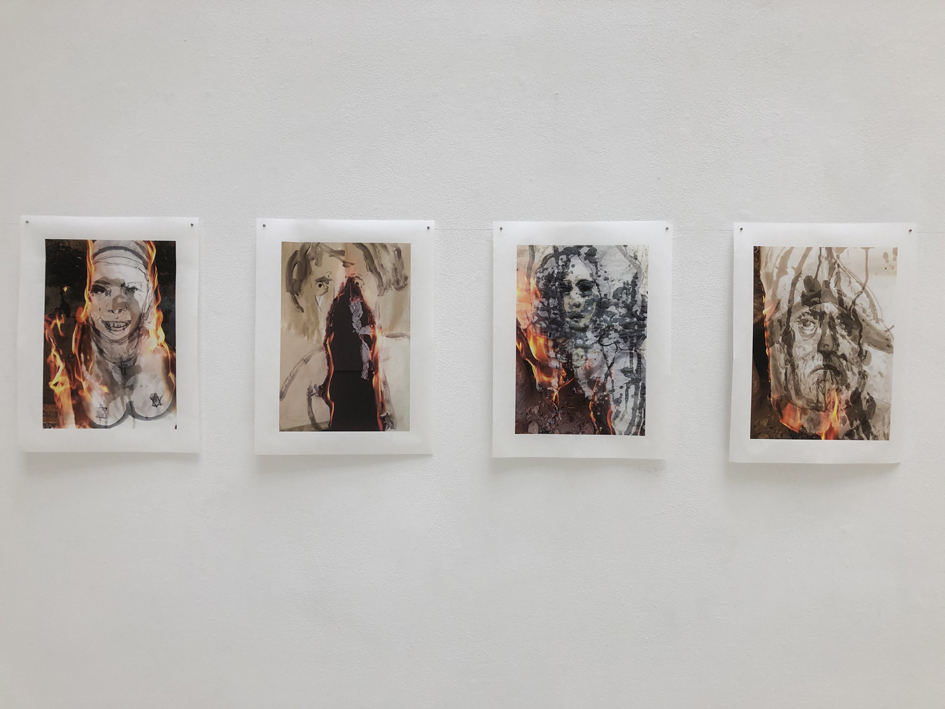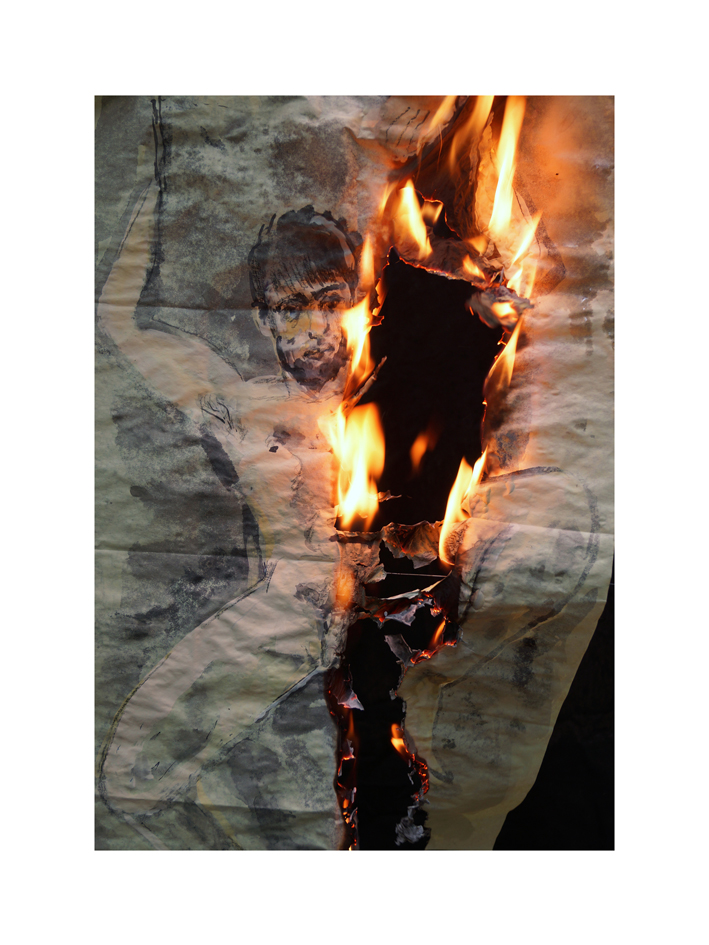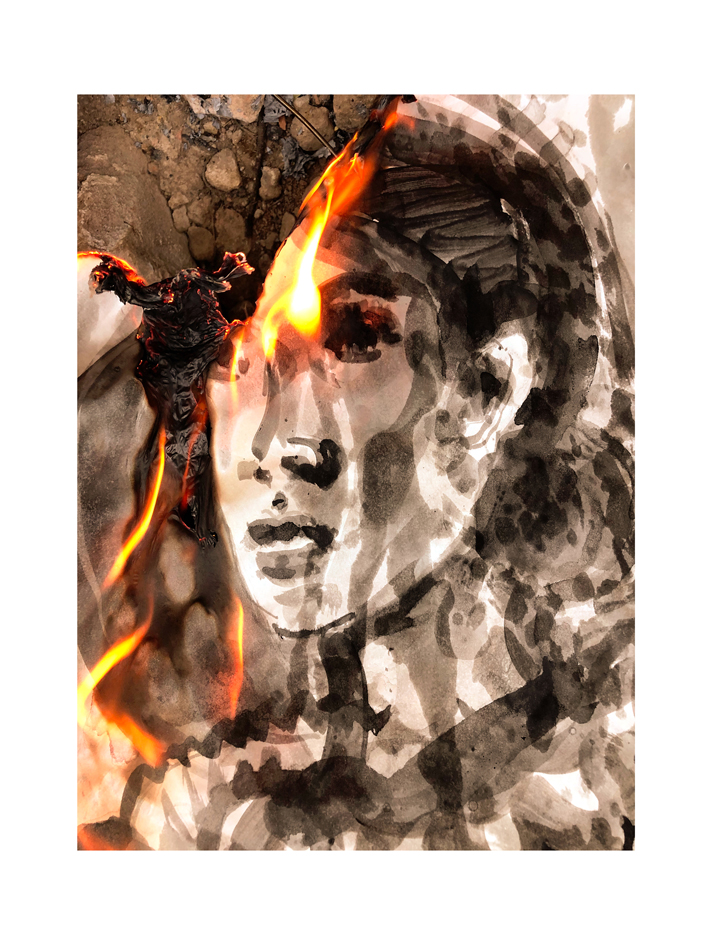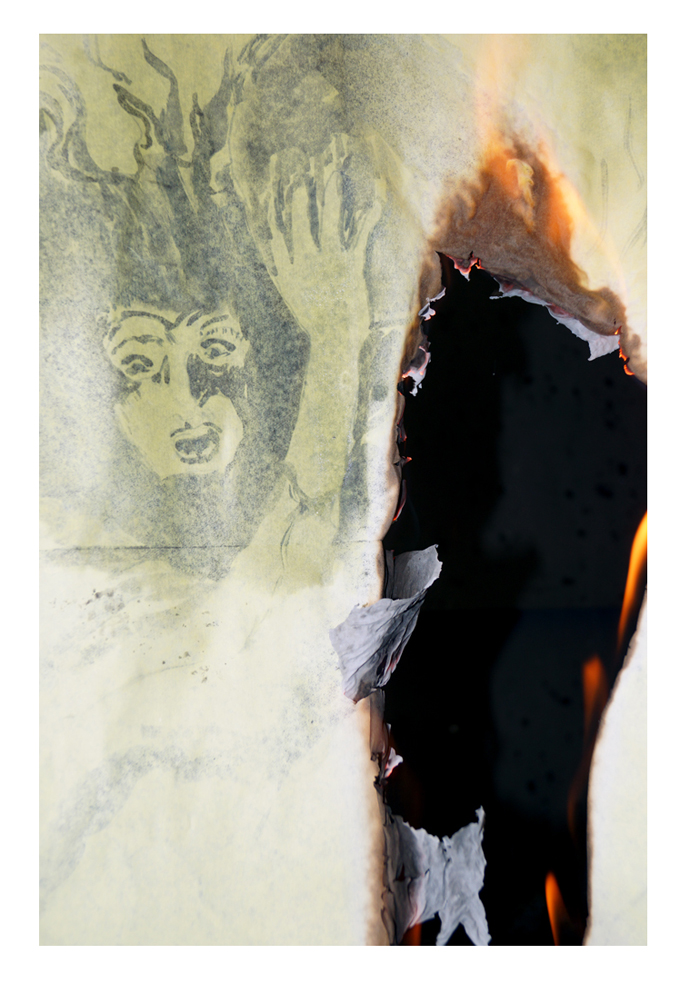Auto-da-fé

Autodafé Nr 9 (Barbara Zdunk), 2018, photos of performative drawing,20x30cm. Edit. Inkjet on Murakami paper.
“In recent years, neuroscientists have substantiated these accounts by showing how trauma can be transmitted across generations epigenetically. Thus, parental trauma can be encoded in children’s DNA structures, making them more vulnerable to traumatic and post-traumatic stress symptoms. Although this research is in its very beginnings and not yet conclusive, it does corroborate the accounts of members of what writer Eva Hoffman (2005) has called the “postgenerations.” And yet, I would suggest that postmemory is not strictly an identity position, but rather a generational structure of transmission embedded in multiple forms of mediation.”
Hirsch, Marianne. (2019). “Connective Arts of Postmemory”. Analecta Política, 9(16), 171-176.

Autodafé Nr. 31,10,27,4.Exhibition vue, Galerie Jean Brolly, 2018 Paris.
The “Autodafé” series of photos of burning drawings provides a reflection on postcolonial dialogues imposing limits on cultural relativism. From the practices of Sati in India to the Inquisition’s witch-hunts, the long duration of crematoria produced in Europe and elsewhere does not serve to put the Nazi-designed holocaust into perspective, but to accentuate the horror of violence in all cases of the immolation of human life. It is also the problem of the confusion between the gaze of the supposedly innocent observer and that of the guilty executioner. With a certain amount of good will, it may be possible to transform them into an empathetic, if not “therapeutic” gaze towards the victims.


The Auto-da-fé series is composed of photos of performative, ephemeral drawings, escaping any category, since they represent the moment of their destruction by fire. The images in question evoke the effects of witchcraft trials, among other variations of the inquisitorial motive, including anti-Semitism. We also find ourselves in the world of censorship, burnt paper, the 451 degrees Fahrenheit of Ray Bradbury’s famous dystopian science fiction. But if the “true beauty of fire” is that “it destroys responsibility and consequences,” Adam Adach does not fail to portray his victims, women or men, in an emancipatory way, as if they were crying out in revolt before succumbing to the flames.

